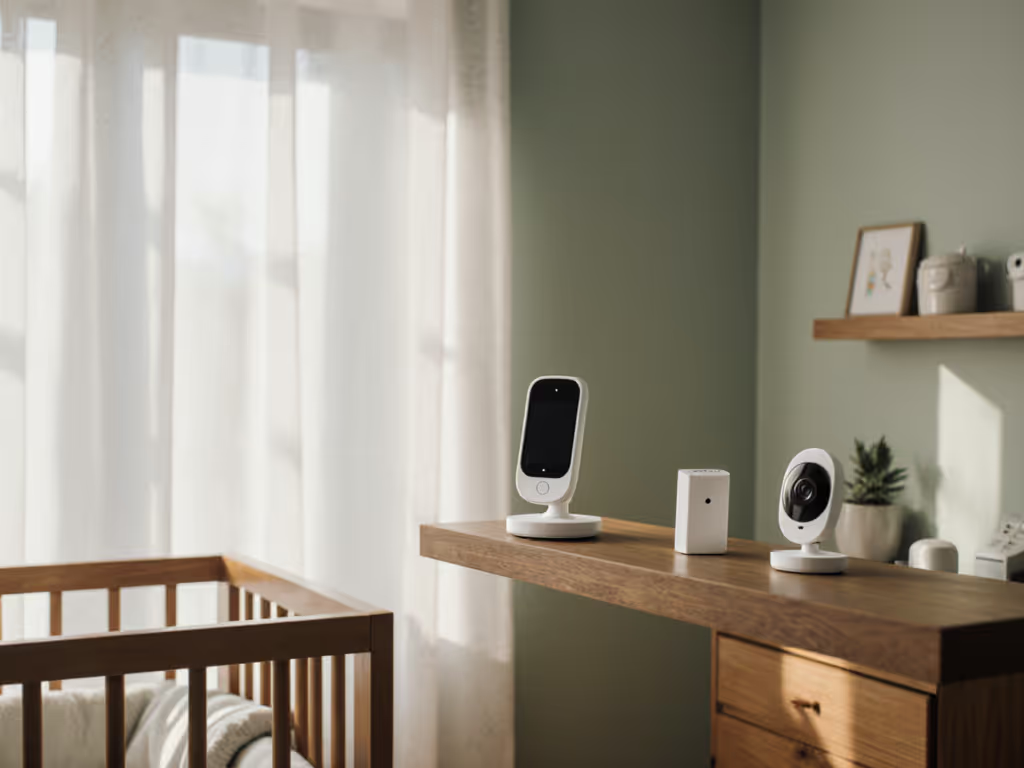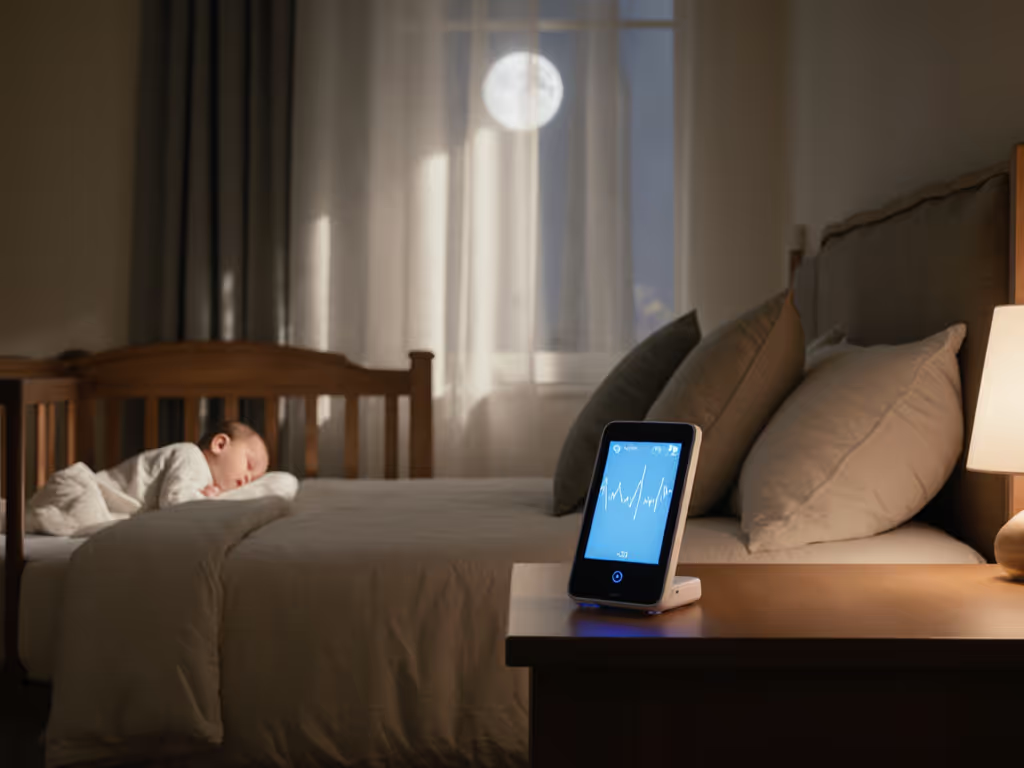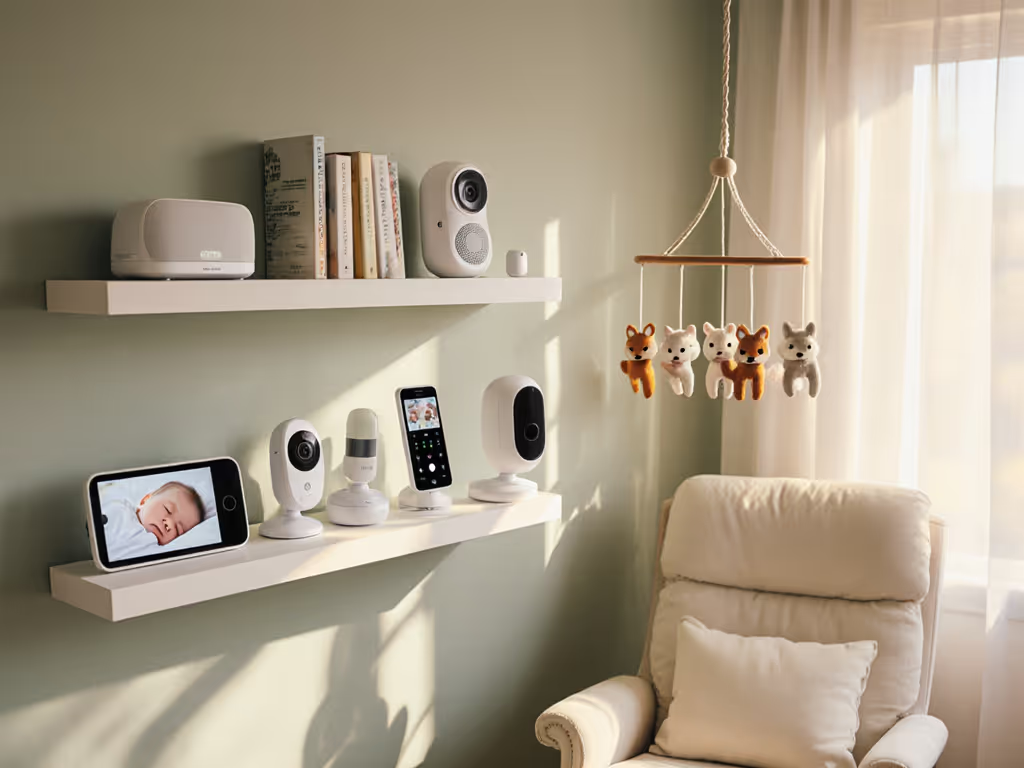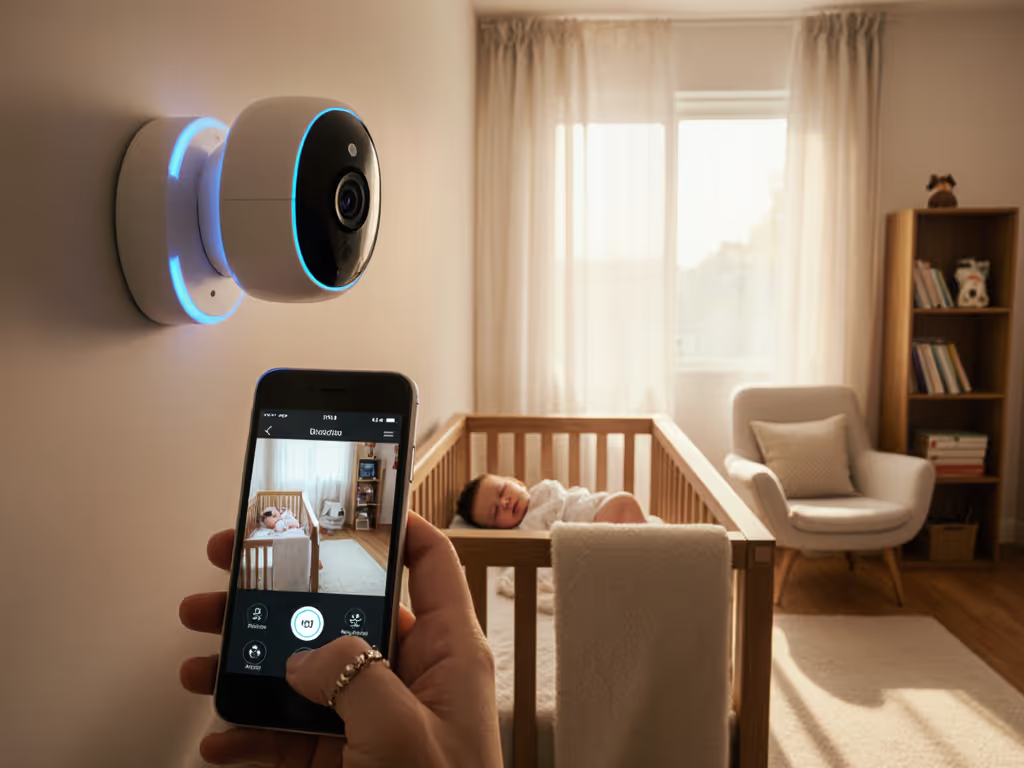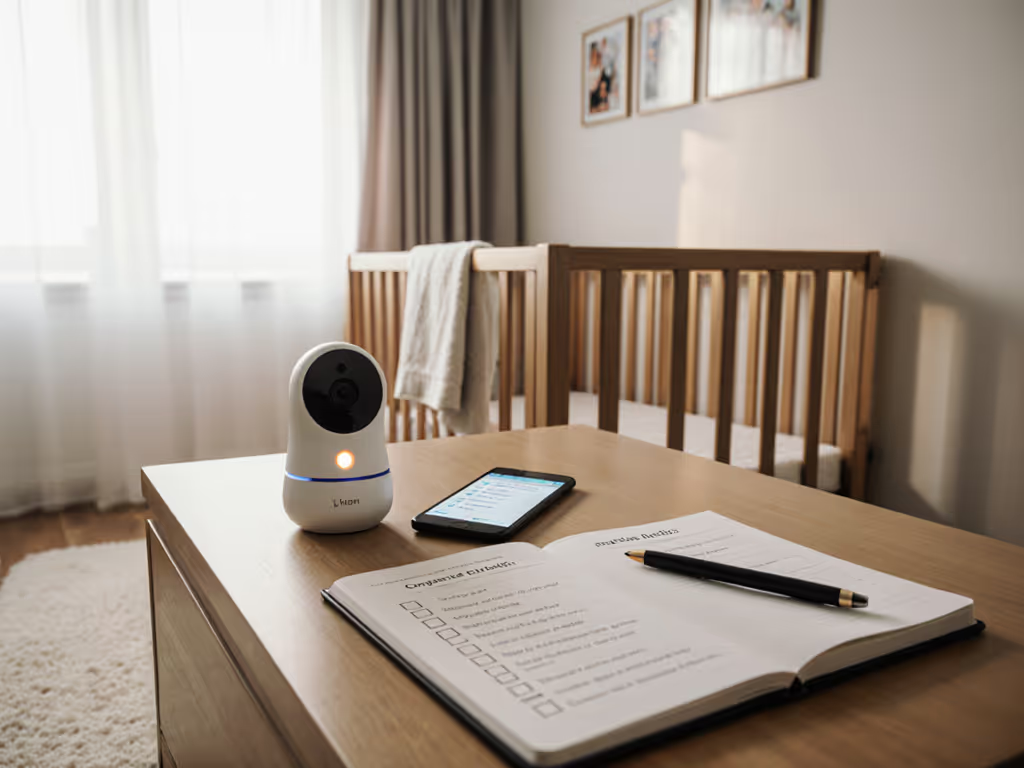
Breathing Motion Sensor: Complete Guide for Parents
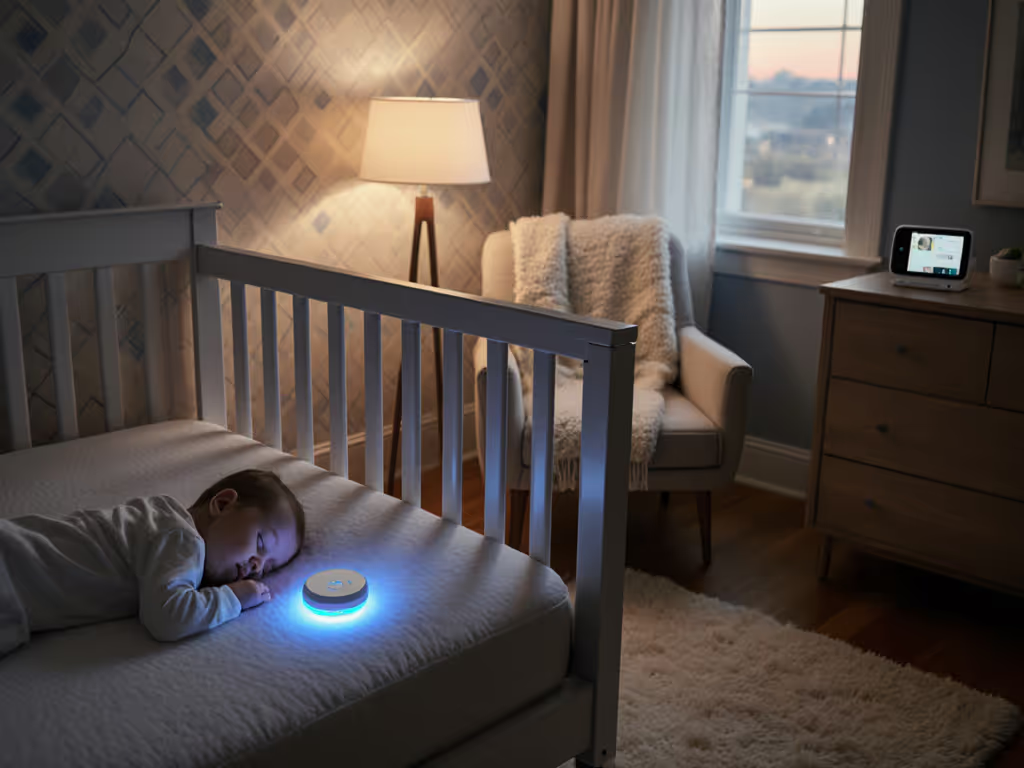
Every year, over 3,400 sudden unexpected infant deaths occur in the United States, highlighting the critical importance of safe and effective baby monitoring. For many parents, keeping track of an infant’s breathing offers peace of mind that basic audio monitors simply cannot provide. Breathing motion sensors use smart technology to detect even the tiniest chest movement, offering a new level of reassurance and early alerts if breathing patterns shift.
Key Takeaways
| Point | Details |
|---|---|
| Innovative Monitoring | Breathing motion sensors provide precise, real-time tracking of infant respiratory patterns with minimal intrusion. |
| Technology Types | Sensors are classified into contact-based and contactless types, each offering distinct monitoring capabilities and comfort levels for infants. |
| Safety and Privacy | Key considerations in selecting sensors include safety from irritation, data privacy protocols, and the accuracy of respiratory monitoring. |
| Proactive Health Tracking | Unlike traditional baby monitors, breathing motion sensors offer comprehensive respiratory insights that enable early detection of potential health issues. |
Breathing Motion Sensor Fundamentals Explained
Breathing motion sensors represent an innovative technological solution designed to monitor an infant's respiratory patterns with remarkable precision and minimal intrusion. These sophisticated devices track the subtle chest movements associated with breathing, providing parents with real-time insights into their child's respiratory health and potential anomalies.
At their core, breathing motion sensors operate through two primary mechanisms: contact-based and contactless technologies. Contact-based sensors typically attach directly to the infant's clothing or body, using sensitive pressure or movement detection mechanisms. Alternatively, contactless sensors leverage advanced technologies like ultrasound, infrared, or radar to observe respiratory patterns without physical contact. These non-invasive methods analyze reflected signals to detect the minute expansions and contractions of an infant's chest during breathing.
- Key Features of Breathing Motion Sensors:- Non-invasive respiratory monitoring- Real-time breathing pattern tracking- Sensitivity to subtle chest movements- Advanced signal processing technologies- Potential early detection of irregular breathing
The technological sophistication of these sensors transforms traditional infant monitoring. By providing continuous, unobtrusive respiratory tracking, they offer parents an additional layer of reassurance and potential early warning system for infant health concerns. Modern breathing motion sensors blend cutting-edge signal processing, advanced sensor technologies, and intelligent data analysis to create a comprehensive respiratory monitoring solution that prioritizes infant safety and parental peace of mind.
Types of Breathing Motion Sensors for Babies
Breathing motion sensors for babies are classified into two primary technological categories: contact-based and contactless systems, each offering unique approaches to monitoring an infant's respiratory patterns. Understanding these different types helps parents select the most appropriate monitoring solution for their specific needs and comfort level.
Contact-Based Sensors physically interact with the infant, using direct measurement techniques. These include:
- Impedance Monitors: Attach to the baby's body and measure electrical impedance changes during breathing
- Accelerometer-Based Sensors: Detect chest movement and respiratory rate through direct physical contact
- Wearable Patches: Small adhesive devices that track breathing movements continuously
In contrast, Contactless Sensors utilize advanced technologies to monitor breathing without direct physical touch. These innovative solutions include:
- Radar-Based Sensors: Use radio wave reflections to detect chest movements
- Infrared Camera Systems: Capture thermal variations associated with breathing
- Structured Light Cameras: Analyze subtle chest movement patterns without physical contact
The choice between contact and contactless technologies depends on individual family preferences, specific infant health considerations, and desired level of monitoring precision. Parents should carefully evaluate each sensor type's accuracy, ease of use, and potential impact on the infant's comfort when making their selection.
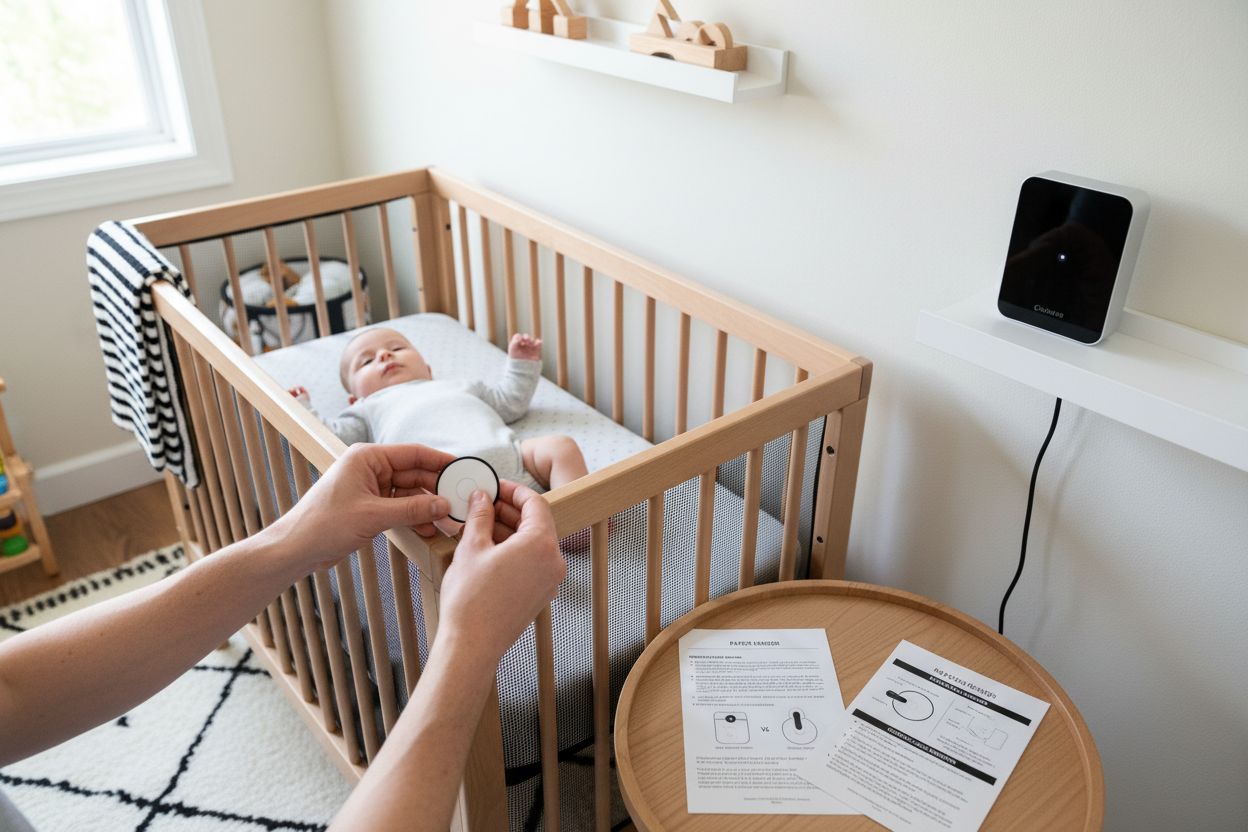
Here's a comparison of contact-based and contactless breathing motion sensors for infants:
| Feature | Contact-Based Sensors | Contactless Sensors |
|---|---|---|
| Sensor Placement | Direct on body/clothing | No physical contact |
| Technologies Used | Impedance<br>Accelerometer<br>Wearable patches | Radar<br>Infrared camera<br>Structured light |
| Invasiveness | Minimal, but direct | Completely non-invasive |
| Comfort for Infant | May cause slight irritation | Highest comfort |
| Detection Accuracy | High, sensitive to placement | High, covers whole body |
| Safety Risks | Possible skin irritation | Minimal, no contact |
| Data Privacy | Local/wireless transmission | May involve video/data streaming |
| Example Usage | Wearable patches on chest | Monitor placed near crib |
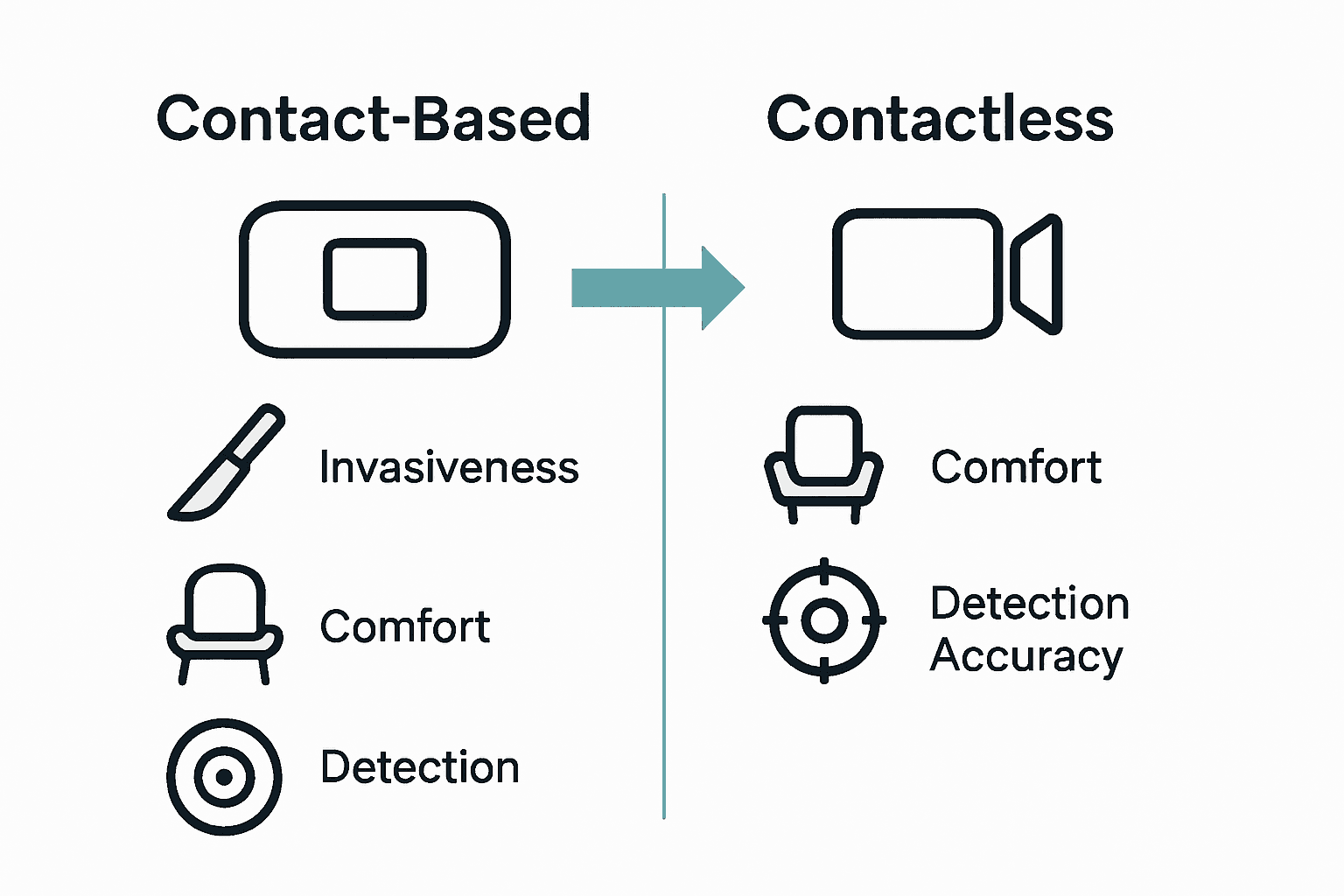 |
|
How Breathing Motion Sensors Detect Movement
Breathing motion sensors employ sophisticated technologies to capture the most delicate respiratory movements, transforming almost imperceptible chest expansions into precise monitoring data. These advanced devices utilize multiple detection mechanisms that convert physical movement into actionable information about an infant's breathing patterns.
For contact-based sensors, detection occurs through direct physical interaction. Impedance monitors measure tiny electrical resistance changes in the body during breathing, while accelerometer-based sensors track precise chest wall movements. These sensors create a direct mechanical link, capturing respiratory rhythm with remarkable sensitivity. The sensor attaches close to the infant's body, recording microscopic motion variations that correspond to inhalation and exhalation cycles.
Contactless technologies represent a more advanced approach to movement detection:
- Radar Sensors: Emit low-power radio waves that reflect off the infant's chest
- Infrared Cameras: Capture thermal variations associated with breathing
- Structured Light Systems: Project invisible light patterns to detect minute chest movements
The core principle across all these technologies remains consistent: translating subtle physical movements into reliable respiratory data. By analyzing the minute mechanical changes during breathing, these sensors provide parents with a continuous, non-invasive monitoring solution that transforms complex physiological processes into straightforward, actionable information about their infant's respiratory health.
Safety, Privacy, and Accuracy Considerations
Selecting a breathing motion sensor requires careful evaluation of three critical aspects: safety, privacy, and accuracy. Parents must navigate these considerations to ensure the most reliable and secure monitoring solution for their infant, balancing technological capabilities with fundamental protection concerns.
Safety Considerations are paramount when choosing a breathing motion sensor. Contactless technologies significantly reduce physical risks associated with traditional monitoring methods. Contact-based sensors can potentially cause skin irritation or discomfort, while contactless approaches eliminate direct physical interaction. Key safety factors include:
- Minimal electromagnetic radiation exposure
- No direct skin contact
- Non-invasive monitoring techniques
- Hypoallergenic design considerations
Privacy Risks represent another crucial evaluation point for modern breathing motion sensors. With increasing connectivity, parents must carefully assess:
- Data transmission security
- Encryption protocols
- Cloud storage practices
- Potential vulnerabilities in wireless communication
Accuracy remains the ultimate benchmark for breathing motion sensor effectiveness. Research indicates that advanced technologies like smart speaker and radar-based systems can provide respiratory rate measurements comparable to traditional medical monitoring equipment. Parents should prioritize sensors with proven track records of precise, consistent respiratory pattern detection, understanding that even minor measurement variations could have significant implications for infant health monitoring.
Breathing Sensors vs. Traditional Baby Monitors
Breathing motion sensors represent a significant technological leap beyond traditional baby monitoring systems, offering parents a more sophisticated approach to infant safety and health tracking. While conventional monitors primarily provide audio or visual surveillance, these advanced sensors deliver critical respiratory information that can potentially save lives.
Traditional Baby Monitors typically feature:
- Audio monitoring of infant sounds
- Video surveillance capabilities
- Limited range of room coverage
- Basic movement detection
- Passive observation without health metrics
Breathing Motion Sensors introduce advanced monitoring capabilities:
- Real-time respiratory rate tracking
- Precise movement detection
- Early warning systems for irregular breathing
- Non-invasive health monitoring
- Advanced data analysis and reporting
The fundamental difference lies in the depth of information provided. Traditional monitors alert parents to audible sounds or visual changes, while breathing motion sensors offer granular insights into an infant's physiological state. By continuously monitoring respiratory patterns, these advanced sensors can detect potential health anomalies that might go unnoticed with conventional monitoring methods. This technological evolution transforms infant monitoring from simple surveillance to a proactive health tracking system, giving parents unprecedented peace of mind and early intervention capabilities.
Enhance Infant Safety with the Right Breathing Motion Sensor
Parents face the challenge of ensuring their infant's breathing is monitored accurately without causing discomfort or compromising privacy. This article highlights the importance of understanding contact-based versus contactless breathing motion sensors, safety, privacy, and detection accuracy. It's clear that selecting a reliable sensor that fits your baby’s needs and your peace of mind is critical in modern infant care.
If you want expert insights on how to choose the best baby monitors and breathing motion sensors that combine safety, privacy, and reliable technology, explore the comprehensive guides and reviews at Baby Monitors for Parents. Discover detailed comparisons of devices designed to monitor your baby with care and precision. Don't wait for uncertainty — empower yourself today by visiting our landing page and learn how to select the perfect baby monitor for your home environment.
Frequently Asked Questions
What are breathing motion sensors and how do they work?
Breathing motion sensors are devices that monitor an infant's respiratory patterns by tracking chest movements. They can operate through contact-based technologies, which attach to the infant's clothing or body, or contactless technologies that use ultrasound, infrared, or radar to detect breathing without physical contact.
What are the differences between contact-based and contactless breathing motion sensors?
Contact-based sensors typically attach directly to the infant and measure movement through physical contact, whereas contactless sensors monitor breathing patterns from a distance using advanced technologies. Contact-based systems might cause slight discomfort, while contactless options prioritize comfort and convenience.
How accurate are breathing motion sensors compared to traditional monitoring methods?
Breathing motion sensors, especially those using advanced technologies like radar, can provide respiratory rate measurements comparable to traditional medical equipment. Their accuracy is crucial for reliable monitoring of an infant's respiratory health and early detection of irregularities.
What safety and privacy concerns should parents consider when using breathing motion sensors?
Parents should evaluate the safety of the sensors by ensuring they are non-invasive and hypoallergenic, while also considering privacy risks such as data transmission security and potential vulnerabilities. Opting for devices with robust encryption and secure data practices is essential for protecting sensitive information.

